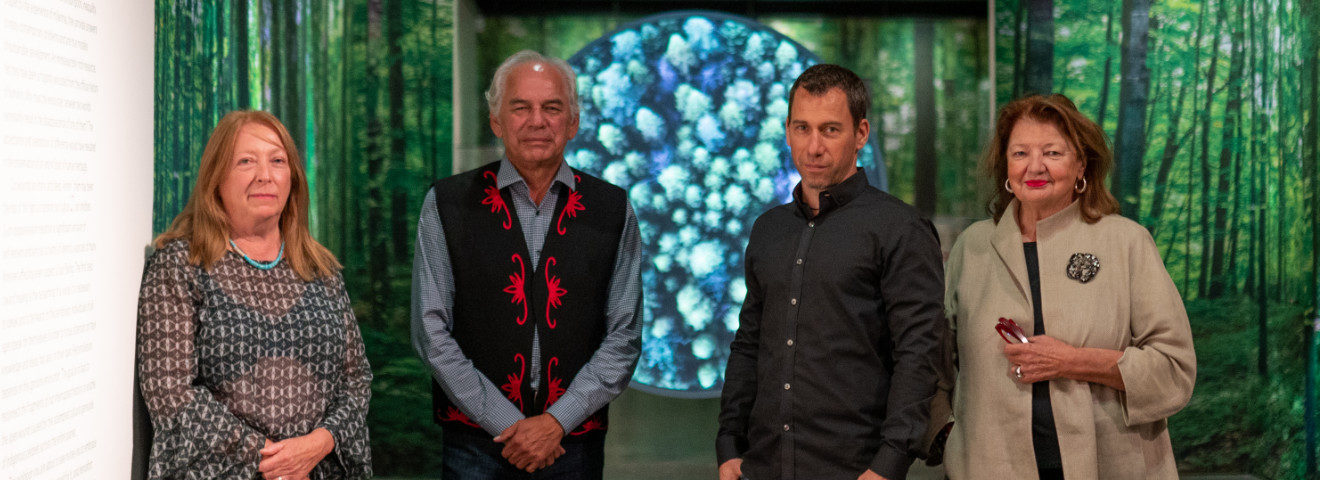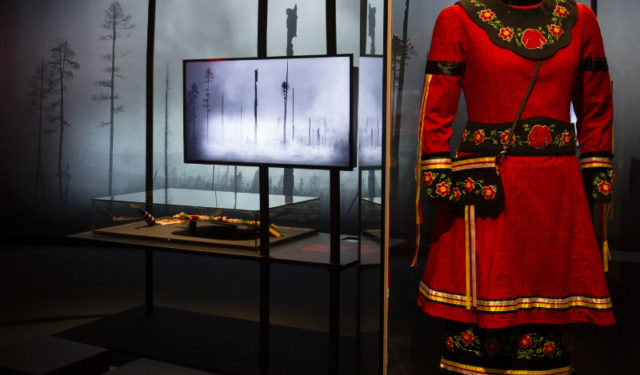News
January 12, 2023

Élisabeth Kaine (1955–2022)
Annonces institutionnelles
It is with great sadness that we learned last Monday of the sudden death of Élisabeth Kaine, curator of the permanent exhibition Indigenous Voices of Today: Knowledge, Trauma, Resilience (winner of the 2022 Governor General’s History Award) and a long-time contributor to the Museum. This exceptional, determined and talented woman brought the voices of Indigenous communities to our museums. With her unique aura, humanism, wisdom and quick wit, she passionately and kindly guided many museums on the winding path of reconciliation. Our thoughts are with her loved ones and the many people she touched with her light.
We asked Jonathan Lainey, Curator of Indigenous Cultures, and Guislaine Lemay, Curator of Material Culture, who had the opportunity to work closely with Élisabeth Kaine, to talk about who she was and how she impacted their professional and personal lives.
An Inspired and Inspiring Mentor
Although our Wendat families are connected, and although I regularly saw her name circulating in the academic and museum world, it was not until I started working at the McCord Stewart Museum three years ago that I really got to know Élisabeth. Of course we immediately hit it off. I loved her. Soft and sensitive, strong and persistent, attentive and open, passionate and generous—it was easy and reassuring to work alongside Élisabeth.
Her sudden departure will certainly leave a great void. Despite her recent retirement from academia, we still had plans together and I looked forward to keeping her as a resource, as a mentor, for a long time to come. She taught me a lot over the last three years.
When I learned about the activities of the Boite Rouge Vif in 2015, I wanted to tell them that their approach was ten or fifteen years ahead of what was being done elsewhere in Indigenous studies. Their collaborative methodology, which encourages dialogue, consultation and peer-to-peer relationships, truly allows Indigenous voices and perspectives to be heard and considered in the development of projects that concern them.
Élisabeth believed in changing practices, mindsets and institutions. Despite the slow pace of progress and how much remains to be done, she noted that things had changed a lot in recent years. Élisabeth will remain a source of inspiration for many, and I hope that her contribution and her message will live on in our individual and collective actions.
Jonathan Lainey, Curator, Indigenous Cultures
Determination and Perseverance
When we started working on the Indigenous Voices exhibition, I brought Élisabeth and Jean St-Onge to our storage facility. They spent a few weeks looking at objects to select those that could be featured in the exhibition. I remember her excitement as she opened the drawers. Every object was for her a masterpiece—a masterpiece of art and design. She often talked about the ergonomics of these objects. She saw them as a way to build a bridge between Indigenous and non-Indigenous cultures. She often said that they carried within them the knowledge, trauma and resilience of Indigenous peoples and were therefore ideal vehicles to make these visible, to tell their stories.
Élisabeth was an intelligent, passionate and exciting person, a fighter, generous with her time and knowledge, full of integrity and commitment. She often said she was stubborn, but what she saw as stubbornness, I saw as determination and perseverance. She wanted things to change and was willing to take it on with all her strength, believing she could contribute to that change. I only knew her for three years, but she had a profound impact on my professional and personal life.
On a more personal level, Élisabeth was an incredible friend, with a heart of gold, whom I met while I was going through a very difficult time. She was always listening. I’m struggling to accept her death. I’m heartbroken for her family, for her partner Jean. I was incredibly lucky to have her in my life, even for such a short time.


